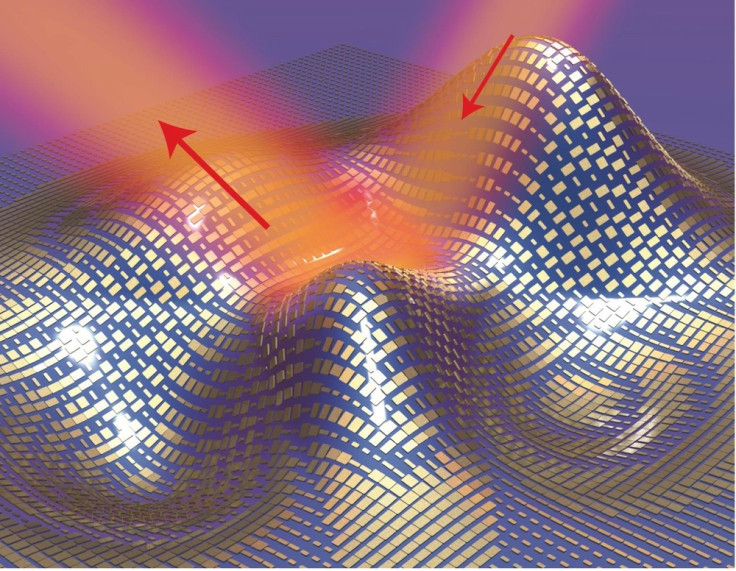Invisibility cloak could cover a tank and make it look like a bicycle

When is a door not a door? When it's covered with gold nanoantennae blocks that can make it appear to be another object entirely - even a jar. Scientists in the US have developed an ultra-thin material that can either be used as an invisibility cloak to conceal objects, or transform it into something else when viewed from a certain angle.
The "skin cloak", created by researchers at the University of California, Berkeley, is currently microscopic in size but it is hoped the material can be scaled up in order to cover larger objects. Thousands of nanoscale dots make up the cloak, acting like antennas for light in order to then interfere with the normal scattering of light waves.
"It's the first time we've done arbitrary shape cloaking," said Xiang Zhang, who led the research. "If you want to cloak people, that is possible with this new work. Our ultra-thin cloak now looks like a coat. It is easy to design and implement, and is potentially scalable for hiding macroscopic objects."
Zhang claimed that the cloak could theoretically be scaled up and used to cover anything, making something as large as a tank look like a bicycle. The researcher also suggested that one application could be in cosmetics, hiding deformities or improving the appearance of someone's body.
Attempts at developing invisibility cloaks have been made before, however previous iterations have used "carpet cloaks" that use bulky materials.
"In contrast to bulky cloaks with volumetric index variation, our device is only 80 nanometer (about one-ninth of the wavelength) thick and potentially scalable for hiding macroscopic objects," the study's abstract states.
The "ultrathin invisibility skin cloak for visible light" is described in the journal Science.
© Copyright IBTimes 2025. All rights reserved.






















